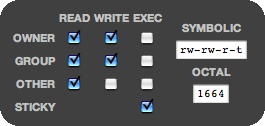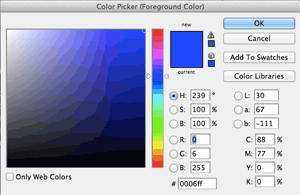AP Computer Science :: Lessons :: Number Base Conversions
Binary Numbers
Normally, we represent numbers in decimal notation, also known as base 10. Decimal notation uses 10 digits (0-9) to represent numbers. We use this notation because it matches the number of fingers we have on our hands. Binary notation, or base 2, uses 2 digits (0-1) and is used by computers because of the on/off nature of an electric current. Below are the first 32 numbers (0-31) displayed as decimal and binary. You may sometimes find it easier to display leading 0s when using binary so the numbers below are displayed with leading 0s. Those leading 0s are not necessary so feel free to leave them off if you can understand the numbers without them.
| Decimal | Binary |
|---|---|
| 0 | 00000 |
| 1 | 00001 |
| 2 | 00010 |
| 3 | 00011 |
| 4 | 00100 |
| 5 | 00101 |
| 6 | 00110 |
| 7 | 00111 |
| 8 | 01000 |
| 9 | 01001 |
| 10 | 01010 |
| 11 | 01011 |
| 12 | 01100 |
| 13 | 01101 |
| 14 | 01110 |
| 15 | 01111 |
| 16 | 10000 |
| 17 | 10001 |
| 18 | 10010 |
| 19 | 10011 |
| 20 | 10100 |
| 21 | 10101 |
| 22 | 10110 |
| 23 | 10111 |
| 24 | 11000 |
| 25 | 11001 |
| 26 | 11010 |
| 27 | 11011 |
| 28 | 11100 |
| 29 | 11101 |
| 30 | 11110 |
| 31 | 11111 |
Octal Numbers

Octal notation, or base 8, uses 8 digits (0-7) and is occasionally used in computers. Unix file permissions use Octal, and it used to be helpful on older computer systems that used 24- or 32-bit words. Octal could be used as a binary abbreviation on these computers because an octal digit could cover exactly three binary digits since 0 through 7 covers 000 through 111 in binary. Modern computers, however, use 16-, 32-, or 64-bit words, which are then divided into 8-bit bytes. Three octal digits would be required for every byte, but the third octal digits would only cover 2 binary digits, which wastes space. This is the main reason why octal has fallen in use. Below is a table showing decimal, binary, and octal numbers 0 through 31.
| Decimal | Binary | Octal |
|---|---|---|
| 0 | 00000 | 00 |
| 1 | 00001 | 01 |
| 2 | 00010 | 02 |
| 3 | 00011 | 03 |
| 4 | 00100 | 04 |
| 5 | 00101 | 05 |
| 6 | 00110 | 06 |
| 7 | 00111 | 07 |
| 8 | 01000 | 10 |
| 9 | 01001 | 11 |
| 10 | 01010 | 12 |
| 11 | 01011 | 13 |
| 12 | 01100 | 14 |
| 13 | 01101 | 15 |
| 14 | 01110 | 16 |
| 15 | 01111 | 17 |
| 16 | 10000 | 20 |
| 17 | 10001 | 21 |
| 18 | 10010 | 22 |
| 19 | 10011 | 23 |
| 20 | 10100 | 24 |
| 21 | 10101 | 25 |
| 22 | 10110 | 26 |
| 23 | 10111 | 27 |
| 24 | 11000 | 30 |
| 25 | 11001 | 31 |
| 26 | 11010 | 32 |
| 27 | 11011 | 33 |
| 28 | 11100 | 34 |
| 29 | 11101 | 35 |
| 30 | 11110 | 36 |
| 31 | 11111 | 37 |
Hexadecimal Numbers

Hexadecimal notation, or base 16, uses 16 digits to represent numbers. Since we only have 10 numbers (0-9) the letters A-F are used to represent 10 through 15. Each hexadecimal digit can represent 4 binary digits (also known as a nibble) so it is much better than octal at shortening binary. You will find hexadecimal numbers used to represent colors in image-editing programs or on the web and you will also find them used in almost any programming language to some degree, especially for assembly languages. This final table shows all four number bases including hexadecimal.
| Decimal | Binary | Octal | Hexadecimal |
|---|---|---|---|
| 0 | 00000 | 00 | 00 |
| 1 | 00001 | 01 | 01 |
| 2 | 00010 | 02 | 02 |
| 3 | 00011 | 03 | 03 |
| 4 | 00100 | 04 | 04 |
| 5 | 00101 | 05 | 05 |
| 6 | 00110 | 06 | 06 |
| 7 | 00111 | 07 | 07 |
| 8 | 01000 | 10 | 08 |
| 9 | 01001 | 11 | 09 |
| 10 | 01010 | 12 | 0A |
| 11 | 01011 | 13 | 0B |
| 12 | 01100 | 14 | 0C |
| 13 | 01101 | 15 | 0D |
| 14 | 01110 | 16 | 0E |
| 15 | 01111 | 17 | 0F |
| 16 | 10000 | 20 | 10 |
| 17 | 10001 | 21 | 11 |
| 18 | 10010 | 22 | 12 |
| 19 | 10011 | 23 | 13 |
| 20 | 10100 | 24 | 14 |
| 21 | 10101 | 25 | 15 |
| 22 | 10110 | 26 | 16 |
| 23 | 10111 | 27 | 17 |
| 24 | 11000 | 30 | 18 |
| 25 | 11001 | 31 | 19 |
| 26 | 11010 | 32 | 1A |
| 27 | 11011 | 33 | 1B |
| 28 | 11100 | 34 | 1C |
| 29 | 11101 | 35 | 1D |
| 30 | 11110 | 36 | 1E |
| 31 | 11111 | 37 | 1F |
Base Conversion To Decimal
Converting from binary to decimal is fairly easy. It makes more sense, though, when you realize what numbers actually stand for. Take the decimal number 4302. That number means there are 4 thousands, 3 hundreds, 0 tens, and 2 ones in the number. You could express it like this:
(4 * 1000) + (3 * 100) + (0 * 10) + (2 * 1)
or
(4 * 103) + (3 * 102) + (0 * 101) + (2 * 100)
Either one of the above formulas will equal 4302, but the second is a little easier to write because we are using exponential notation. Also, you may have realized that it can be difficult to tell what number base a number is in just by looking at it. For example, 4302 could be decimal, octal, or hexadecimal. For this reason numbers will have a subscript after them specifying the base if the base is not obvious. If there is no subscript you can assume decimal notation. So the number 4302 would be shown as 4302DEC or just 4302 to indicate it is in base 10.
Converting from binary to decimal uses this same principle. Let's try converting 100101BIN to decimal. The difference compared to what we did in base 10 was we will be using a 2 instead of a 10 in exponential notation.
(1 * 25) + (1 * 22) + (1 * 20)
= 32 + 4 + 1
= 37
Notice that we did not include any of the bits that were equal to 0 since they would evaluate to 0 anyway. If this is confusing for you then simply include them in the formula.
Converting from octal to decimal works the same way. Let's convert 230OCT to decimal.
(2 * 82) + (3 * 81)
= (2 * 64) + (3 * 8)
= 128 + 24
= 152
When using a base other than binary you need to remember to multiply the number in front of the exponent to get the correct result. Finally, let's convert a number in hexadecimal format to decimal. We will convert 2C03HEX to decimal.
(2 * 163) + (12 * 162) + (3 * 160)
= (2 * 4096) + (12 * 256) + (3 * 1)
= 8192 + 3072 + 3
= 11267
The key difference with hexadecimal conversion is you need to remember what the letters stand for. C stands for 12, in this case, so we substituted 12 in the formula.
Base Conversion From Decimal
Converting to another base from decimal is a little trickier than what we just accomplished, but if you're a fan of long division you'll feel right at home. To convert decimal to any other base you simply need to divide the decimal number by the new base number. The remainder each time will be the digits of the new number from right to left. You keep dividing until there is nothing left. Let's see any example by converting 71 to binary. Start at the bottom of the divisions below and move up.

0 R 1
2) 1 R 0
2) 2 R 0
2) 4 R 0
2) 8 R 1
2)17 R 1
2)35 R 1
2)71
The answer to the above problem would be 1000111BIN. You can check your answer by converting back to decimal if you need to.
We won't do an octal conversion since that will be exactly the same as the above except you would substitute an 8 for the 2, but let's try to convert 8435 to hexadecimal.

0 R 2
16) 2 R 0
16) 32 R 15
16) 527 R 3
16)8435
The answer to the above problem would be 20F3HEX since 15 equals F in hexadecimal. For practice converting between different number bases you can pick any number and use the number base converter at Cut The Knot to check your answer.




